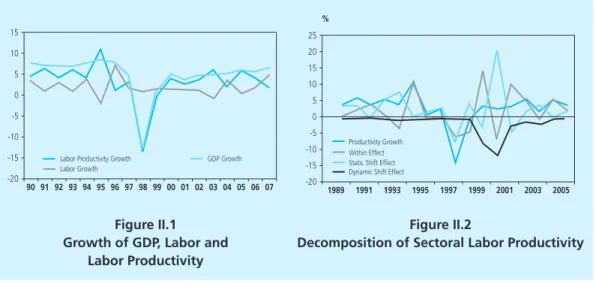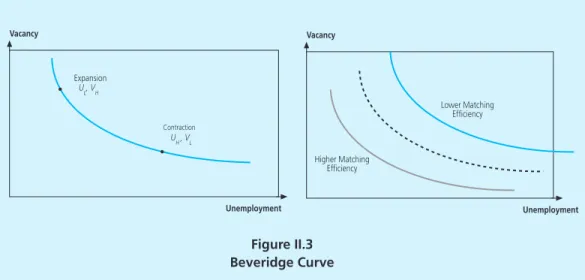This reflects that the failure of labor displacement originating from the industrial sector is higher than that of other sectors, especially during crisis. How the actual phenomenon of labor displacement in Indonesia is the topic analyzed in this article. Nevertheless, that research did not reach the measured figure in the form of labor transition matrix across sectors and did not explain the characteristics and the determinants of the labor shift.
The labor displacement issue is labor transition between sectors and regions discussed in this article. A policy can affect the intensity of labor utility without affecting the labor shift between regions and industries. On the other hand, the labor supply per household is specified on the basis of real wage - wio /P, and leisure - H. The real wage consists of main wage, support, bonus and other components that can be counted in money rate.
Assuming that the displacement effect and the amount of labor are constant, the shift of labor to a better7 sector will increase average labor productivity. Conversely, the shift of labor to a less superior sector will collectively reduce average labor productivity and collectively reduce the output growth rate. Holzer (1989) states that types of labor turnover have different implications for labor absorption and unemployment rates.
Meanwhile, the negative static shift effect value indicates the labor shift phenomenon to the sector that has lower labor productivity level.

RESULT AND ANALYSIS
Structural Break in Labor Market in Indonesia
The regression is not performed in a panel, but in a specific period to see how the possibility of changing jobs is based on the characteristics (gender, age, education, origin from the formal sector, salary and white-collar worker)9. The Paired Sample Test method is also used to identify whether the structural break in the work structure in Indonesia occurs or not. As previously described, there is massive unemployment during the crisis, but in fact in 1998 labor absorption increased positively by 2.7% (Table II.1).
This collectively means that the rate of labor absorption remains the same during the crisis and there is a migration of labor, especially to the informal sector. During the crisis, in most sectors, except for the agricultural sector, 8.7% of work shifts to the informal sector. Using primary data from a survey conducted by Bank of Indonesia10, the results of the DSM survey show a decrease in labor growth from 2007 to the first quarter of 2009, although it has a negative growth of minus 2.48% in the first quarter of 2009 (Figure II .6).
It shows that the companies are trying to reduce the high labor costs that occurred when the companies do job printing. 11 Definition used: PERMANENT WORK is labor that has fixed working hours every day and obtains a pension fund, CONTRACT WORK is labor that is employed on the basis of a specific contract/project and does not obtain a pension fund, and NON-PERMANENT WORK i s labor with fixed working hours and without the pension fund or the company's facility. 95% Confidence 95% Confidence 95% Confidence 95% Confidence 95% Confidence Interval of the Interval of the Interval of the Interval of the Interval of the Difference Difference Difference Interval Std.
The reduction in the labor force is mainly for contract jobs, with permanent downsizing (laid off) in both 2008 and 2009. This is consistent with the theory that firms tend to replace their permanent labor with temporary labor. contract to reduce the wage cost component, in addition to the principal. salary. Based on the results of the survey, the main reason for reducing working hours by a firm is cost efficiency (37.61%), shrinking global demand (34.19%) and falling domestic demand (19.66%).
During the crisis, exports have had negative growth since November 2008 to July 2009 (see Figure II.10). The description from the labor supply side shows that people of productive age during the crisis tend to be unemployed due to the lack of new vacancies. This phenomenon is in line with a paired sample test which shows that there is no structural break in the Indonesian labor market.
Labor Shifting Determinant
And the largest marginal effect is in the transport sector, where men are 21.9% more likely to be transferred than women. Meanwhile, working age (AGE) has no significant effect on the probability of job transfer. Previous formal work experience (FORMAT_CAT) has a significant and high marginal effect on the probability of labor relocation for all sectors.
The evaluation result shows that except for the salary level (WAGE_CAT), all variables affect the probability of job displacement in the construction sector12. The estimation result also shows that educated workers have lower displacement probability of 5.1% in displacement than uneducated workers. The largest marginal effect among job characteristics on the probability of job displacement is previous work experience; for workers who once worked in the formal sector, the probability of moving from the construction sector is 41.02% higher.
Based on the estimation results, there is a significant marginal effect on labor transfer in the agricultural sector of previous formal work experience. White-collar workers, on the other hand, have a 4.0% higher transfer probability than blue-collar workers. The result of the evaluation shows that among all the explanatory variables internalized in the model, only the level of education (EDUC_CAT), the level of the position (JOB_CAT) and previous work experience in the formal sector (FORMAL_CAT) have a significant impact on the probability of labor migration from the trade sector to other sectors. .
In this trade sector, employees with previous formal work experience have a higher switching probability of 40.58%. White-collar workers have a higher switching probability of 4.58%, while highly skilled workers also have a higher switching probability of 2.99% than the unskilled. Overall, a 35-year-old male working in the trade industry with a high level of education, high wages, in a managerial position, and previous formal work experience will have a 36.12% higher chance of staying in the trade industry.
After formal work experience variable (FORMAL_CAT), the second highest marginal effect is gender (SEX), where the male workers in the transport sector have a higher probability of 21.59% than the female workers. Statistically, the inference test shows that low-wage work has a higher displacement probability of 3.82% than high-wage work. For 35-year-old and highly educated male workers in the financial sector, in a managerial position, with a high salary and with previous formal work experience, will have a higher probability of 55.8% to stay and work in the financial sector.
The explanatory variables that strongly influence the likelihood of labor shifts in the financial sector are previous formal work experience (FORMAL_CAT), education (EDUC_CAT) and wage level (WAGE_CAT), with sequential marginal effect and 13.75%. The effect of education and wage level on the likelihood of labor shifts in the financial sector is the largest of all observed sectors.
CONLCUSION AND SUGGESTION
In addition, the estimation result also shows relatively lower marginal effect of previous formal work experience in Agriculture compared to other sectors. For laborers with formal work experience, the tendency to leave the agricultural sector is 37.2% higher, while the average for all sectors is 45% higher than those without formal work experience. The third conclusion, the Industry is a sector with constant labor reduction and is not followed by in-migration to that sector.
This conclusion is supported by the estimation result, which shows that for male workers aged 35, being highly educated, in managerial positions with high salary and having previous formal work experience are the three most likely to not switch and stay in the same sector, in Electricity with a probability of 70.15%, Finance (55.8%) and Mining (53.13%). Fifth conclusion, the educational factor does not affect the probability of labor relocation in the electricity and transport sectors. In these sectors, the male workforce has a higher probability of relocation than the female workforce, with the greatest tendency occurring in the transport sector with a 21.9% higher probability.
The seventh conclusion, the age of the workforce does not have a significant effect on the probability of job change. Statistically, the variable age only affects the possibility of moving labor in the industrial sector, but with a very low marginal effect value of 0.12%. This means that high-wage workers have a displacement probability of 13.7% and 19.7% lower than low-wage workers.
The ninth conclusion, the financial sector is the most dynamic sector of nine existing sectors, with the highest migration target being to the trade sector (1.22%), service sector (0.56%), industry (0.49%) and agriculture ( 0.49 %). The most influencing explanatory variables towards the tendency to change jobs from the financial sector are previous formal work experience (FORMAL_CAT), education (EDUC_CAT) and salary level (WAGE_CAT) with a subsequent marginal effect of and 13.75%. The effect of education and wage levels on the probability of labor displacement in Finance is the largest among all observed sectors.
In addition, the effect of formal work experience on the shift probability in the financial sector is second highest after the Industry sector. In addition, the modeling can be developed to allow the internalization of the structural factors, such as sector growth, the level of exposure of each sector and other variables with a strong theoretical basis and/or a strong empirical relationship to the labor shift phenomenon. 2008.∆Job-to-Job Transitions: Increasing Mobility and Security in the Workforce∆∆Center for Data Analytics 08-06.The Heritage Foundation.
Non labor force Non labor force Non labor force Non labor force Non labor force Unemployment. Unemployment Unemployment Unemployment Unemployment Non-working population Non-working population Non-working population Non-working population Non-working population Non-working age Non-working age Non-working age Non-working age Non-working age Transition matrix Transition matrix Transition matrix Transition matrix Transition matrix. Non labor force Non labor force Non labor force Non labor force Non labor force Unemployment.
Unemployment Unemployment Unemployment Unemployment Unemployment Not in the labor force Not in the labor force Not in the labor force Not in the labor force Not in the labor force Age Not in the labor force Age Not in the labor force Age Not in the labor force Transition matrix Transition matrix Transition matrix Transition matrix.








